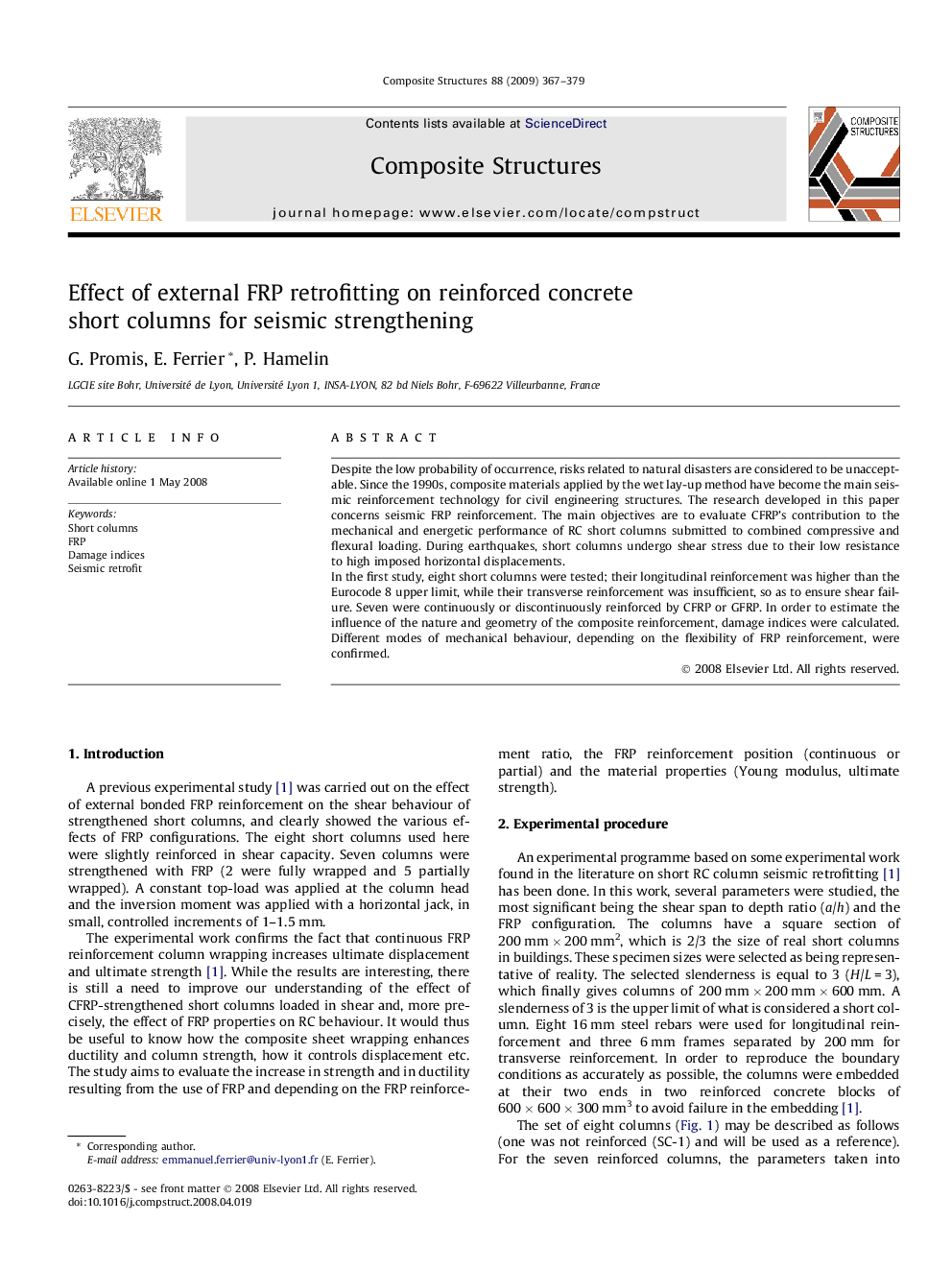| Article ID | Journal | Published Year | Pages | File Type |
|---|---|---|---|---|
| 253902 | Composite Structures | 2009 | 13 Pages |
Despite the low probability of occurrence, risks related to natural disasters are considered to be unacceptable. Since the 1990s, composite materials applied by the wet lay-up method have become the main seismic reinforcement technology for civil engineering structures. The research developed in this paper concerns seismic FRP reinforcement. The main objectives are to evaluate CFRP’s contribution to the mechanical and energetic performance of RC short columns submitted to combined compressive and flexural loading. During earthquakes, short columns undergo shear stress due to their low resistance to high imposed horizontal displacements.In the first study, eight short columns were tested; their longitudinal reinforcement was higher than the Eurocode 8 upper limit, while their transverse reinforcement was insufficient, so as to ensure shear failure. Seven were continuously or discontinuously reinforced by CFRP or GFRP. In order to estimate the influence of the nature and geometry of the composite reinforcement, damage indices were calculated. Different modes of mechanical behaviour, depending on the flexibility of FRP reinforcement, were confirmed.
